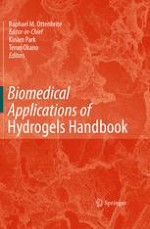2010 | OriginalPaper | Buchkapitel
Thermo-Responsive Biodegradable Hydrogels from Stereocomplexed Poly(lactide)s
verfasst von : Tomoko Fujiwara, Tetsuji Yamaoka, Yoshiharu Kimura
Erschienen in: Biomedical Applications of Hydrogels Handbook
Verlag: Springer New York
Aktivieren Sie unsere intelligente Suche, um passende Fachinhalte oder Patente zu finden.
Wählen Sie Textabschnitte aus um mit Künstlicher Intelligenz passenden Patente zu finden. powered by
Markieren Sie Textabschnitte, um KI-gestützt weitere passende Inhalte zu finden. powered by
